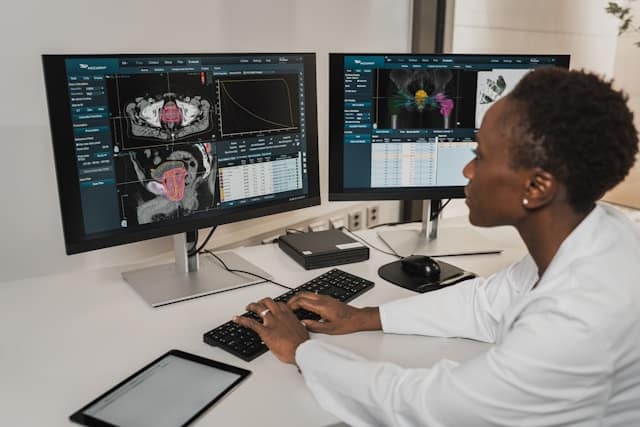What Are the Prospects of Brain-Computer Interfaces in Treating Neurological Disorders?

In the heart of the digital age, where artificial intelligence and advanced technologies have become commonplace, an exciting field of research has surfaced: Brain-Computer Interfaces (BCIs). BCIs are systems that allow the human brain to communicate directly with an external device, such as a computer. They provide a direct pathway from the brain to the computer, bypassing the need for conventional input methods. This technology, which seems like something out of science fiction, has the potential to revolutionize the way we interact with technology and even promises to offer new treatment options for various neurological disorders.
An Introduction to Brain-Computer Interfaces
A BCI is a sophisticated piece of technology that provides a bridge between the brain and a computer. It works by monitoring the electrical activity of the brain, typically using electroencephalography (EEG) techniques, and translating it into commands that a computer can understand. This means that the raw data emitted by our neurons, in the form of electrical signals, can be captured, digitized, and used to control an external device.
A découvrir également : How Are Digital Twins Being Used to Enhance UK’s Urban Planning Strategies?
BCIs are not a recent invention. The concept was first proposed in the 1970s, and since then, significant advancements have been made in the field, thanks to the invaluable contributions of many scholars and researchers. Today, we can find a plethora of scientific papers on the subject on platforms like Google Scholar, PubMed, and PMC, which testify to the growing interest in BCIs.
The Potential of BCIs in Treating Neurological Disorders
The potential applications of BCIs are vast and varied. But perhaps, their most promising application lies in the field of medicine, specifically in the treatment of neurological disorders. There are several neurological conditions where the motor control of patients is severely compromised, including conditions like paralysis, stroke, and cerebral palsy.
A voir aussi : How Might 3D Holographic Imaging Revolutionize Medical Diagnostics?
BCIs, by providing a direct interface between the brain and a computer, could potentially bypass the dysfunctional motor pathways in these patients. This means that a patient with paralysis, for instance, could potentially control a prosthetic limb or even a wheelchair purely by thought. BCI technology could also be used to deliver targeted neural stimulation, which could assist in the recovery process.
Several pilot studies and clinical trials have already been conducted on this front. For example, a quick search on Google Scholar, PubMed, or Crossref will reveal numerous articles discussing the successful use of BCIs in restoring motor functions in patients with spinal cord injuries.
The Role of Artificial Intelligence in BCIs
Artificial Intelligence (AI) plays a crucial role in the functioning of BCIs. For a BCI to work effectively, it must be able to precisely interpret the complex neural signals emitted by the brain. This is where AI comes in. Advanced machine learning algorithms are used to analyze the raw EEG data, identify meaningful patterns, and translate them into commands that a computer can understand.
The use of AI in BCIs is not just limited to signal processing. AI can also be used to improve the overall performance and reliability of BCIs. For example, AI algorithms can be used to adapt the BCI to the user’s specific brain patterns, thus providing a more personalized and effective interface.
The Future Prospects of BCIs
Despite the significant advancements made in the field of BCIs, there is still a long way to go. The human brain is an incredibly complex organ, and we are only just beginning to scratch the surface of understanding how it works. However, the potential of BCIs is undeniable, and with further research and development, we can expect to see some exciting developments in the future.
For one, we can expect to see more refined, non-invasive BCIs that can be used without the need for surgical implantation. Additionally, as our understanding of the brain improves, we can also expect to see BCIs that can interface with more complex cognitive functions, such as memory and emotion.
Moreover, BCIs could potentially be used to treat a wider range of neurological disorders. For example, there is promising research being conducted on using BCIs to treat conditions like epilepsy and Parkinson’s disease.
Lastly, BCIs could potentially be integrated with other technologies, such as virtual reality and augmented reality, to provide novel experiences and treatment options. This could open doors to new therapeutic approaches, such as virtual reality-based cognitive rehabilitation and exposure therapy for conditions like post-traumatic stress disorder (PTSD).
Conclusion
To conclude, BCIs represent an exciting frontier in the field of neuroscience and technology. While there are still many challenges to overcome, the potential benefits of BCIs, particularly in the treatment of neurological disorders, are immense. As research continues and technology advances, we can look forward to a future where BCIs play a crucial role in our interaction with technology and in improving the quality of lives of those suffering from neurological disorders.
Recent Developments and Limitations in the Field of BCIs
A considerable amount of research has been conducted in the last decade alone. A simple search on Google Scholar, PubMed or PMC will reveal countless studies and free articles related to brain-computer interfaces (BCIs). The technology has evolved from its early stages, where it required invasive procedures, to the present where non-invasive BCIs are being developed. These EEG-based systems acquire brain signals from the scalp, minimizing the risks associated with surgical procedures.
BCIs have even been combined with other technologies such as closed-loop systems, deep brain stimulation, motor imagery, and brain-machine interfaces, yielding promising results. For instance, closed loop BCIs gather real-time feedback from the brain, allowing for adjustments to electrical stimulation which may prove beneficial in treating neurological disorders. Moreover, motor imagery-based BCIs, which decipher brain signals related to the imagination of movement, have been employed in the rehabilitation of stroke victims.
Despite these advancements, several limitations need to be addressed. First, the interpretation of brain signals still poses a significant challenge. Feature extraction and the translation of these signals into computer interfaces require sophisticated algorithms. Furthermore, the quality and reliability of signals acquired non-invasively can be compromised due to interference from other electrical sources. Lastly, ethical considerations surrounding BCIs, such as privacy and autonomy, need further exploration as the technology advances.
Conclusion: The Promising Future of BCIs
While the journey towards the perfect BCI system continues, the progress made so far is remarkable. The key to the success of BCIs lies not only in technological advancements but also in our understanding of the brain. The more we uncover about brain functions, the more effectively BCIs can be designed and utilized.
The application of BCIs in the treatment of neurological disorders presents a beacon of hope to many patients. The ability to bypass dysfunctional neural pathways and provide direct brain stimulation could revolutionize the treatment of conditions such as paralysis and cerebral palsy.
The use of AI in BCIs is likely to increase, making these systems more efficient and personalized. Through machine learning algorithms, BCIs may adapt better to individual brain patterns, and the interpretation of complex neural signals could become more precise.
In addition to medical applications, BCIs could redefine our interaction with technology. The integration of BCIs with virtual reality or augmented reality could lead to novel experiences and therapeutic approaches, such as virtual reality-based cognitive rehabilitation.
As the field of BCIs continues to evolve, the importance of sharing research findings publicly cannot be overstated. Free articles on Google Scholar, PMC and PubMed have contributed immensely to the progress made in BCIs. The continued dissemination of information through these platforms will certainly play a critical role in future advancements.
In light of the aforementioned points, one thing is clear: the era of brain-computer interfaces (BCIs) is just beginning. Despite the challenges ahead, the prospects are bright, and the potential benefits are vast. As we delve deeper into the human brain and refine BCI technology, we can look forward to a future where BCIs not only enhance our interaction with technology but also significantly improve the lives of those afflicted with neurological disorders.
